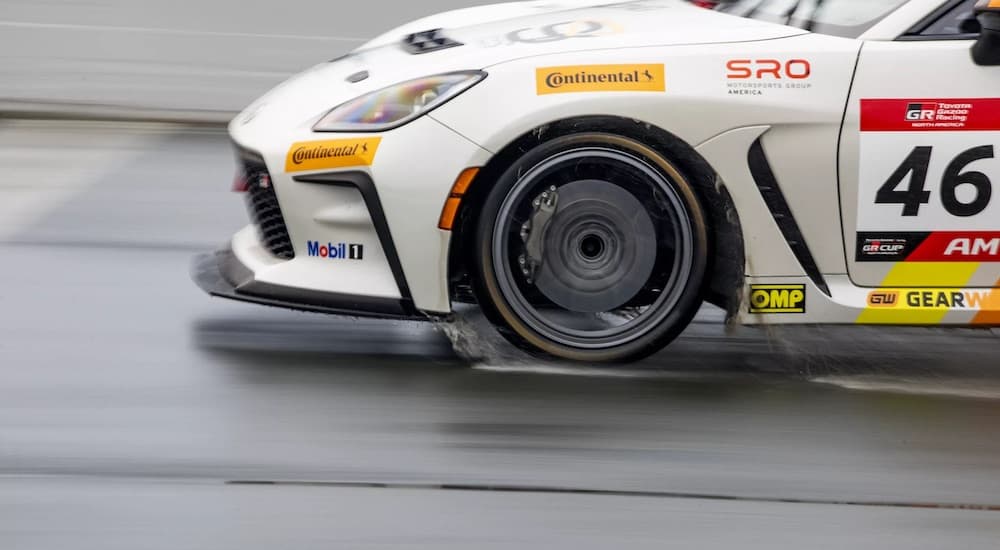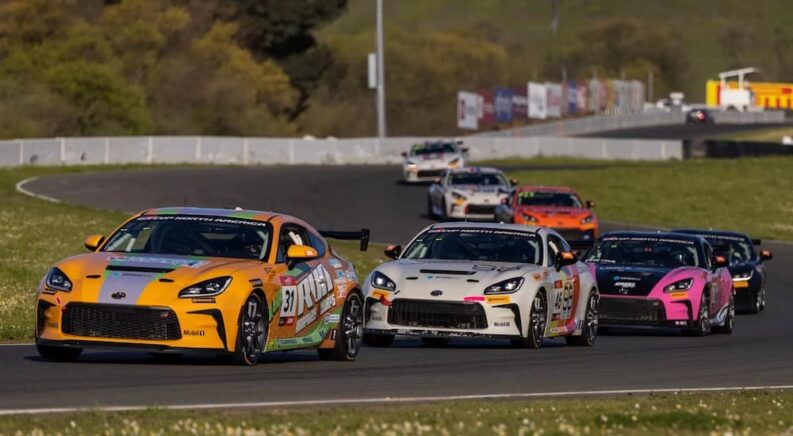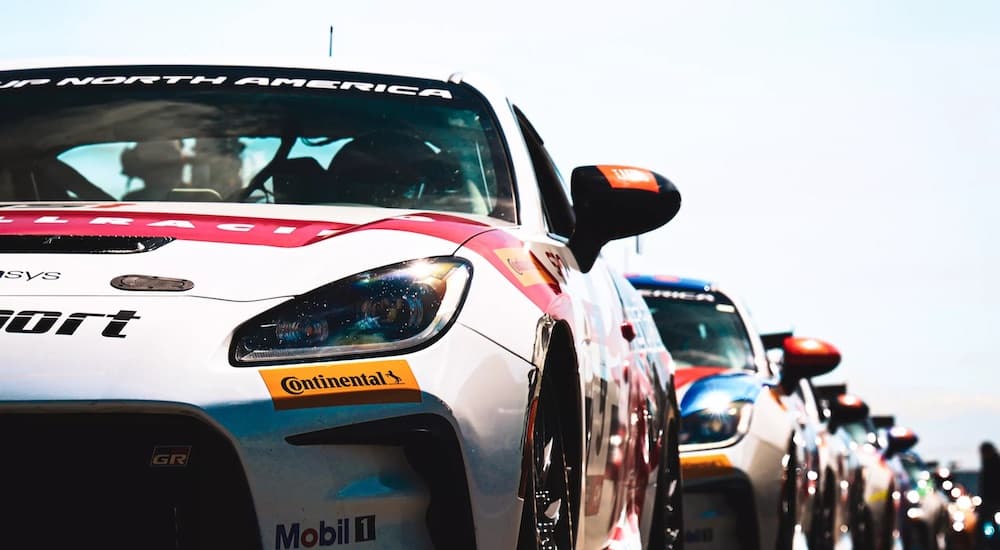On March 31, the Toyota GR Cup kicked off, and it’s not just Toyota fans that should be excited—anyone with even a passing interest in motorsports should be paying attention to this one. With a fantastic-looking inaugural season, the GR Cup is ready to open up single-make racing to a wider range of drivers and fans, which is always a good thing. It’s also an absolute celebration of the Toyota GR86, which is already one of the best budget-friendly options on the market for a sports car that’s fun to drive. While certainly not the first single-make racing series in the US, the GR Cup is looking to pull more people in and get fans and drivers alike excited about the future of motorsports and how Toyota will be a part of it.
What Is the Toyota GR Cup?
To put it simply, the Toyota GR Cup is a single-make racing series that consists of numerous races and events in which more than two dozen teams will compete. What sets this apart from many other types of racing is that only a single make and model is allowed in the competition: the current Toyota GR86—that’s why Toyota’s name is all over this thing. The cars are modified a bit for the track (more on that in a moment), but otherwise, they all have the same engine and basic components. As such, this type of racing is an exhibition of driver skill since so many other potential factors have been taken out of the proverbial equation.
This type of single-make racing series has been growing in popularity recently, and the GR Cup joins a number of similar events from other brands, including the Mazda MX-5 Cup, Porsche Carrera Cup, and more. Compared to high-end professional racing, these kinds of series are typically smaller in scale, with thousands of fans and viewers rather than hundreds of thousands or more. As far as I’m concerned, that’s a good thing—such smaller events allow drivers to make a name for themselves, and this type of racing creates more opportunities for people to get involved.
The GR Cup and series like it are all about accessibility—a GR Cup car costs about $125,000, and each event runs about $25,000. That may seem like a lot, but for comparison, a NASCAR stock car can run close to half a million dollars, with each race costing well into six figures. In total, Toyota’s goal was to create a series that people could join for about a quarter of a million dollars—a lot for hobbyists but far less expensive than plenty of other racing series.
To help with these expenses, Toyota has provided a purse of $1 million. Winning will earn a team $12,000 per race, second place gets $10,000, third place receives $8,000, and fourth through eighth walk away with $5,000. In addition, the overall season champion gets another $50k. There is also a $5,000 bonus for the top-placing female driver in each race to encourage more diversity on the track—there are currently four female racers in the GR Cup competing for this bonus.

How Are the GR86 Models Configured?
Although there are some major changes made to the cars before they ever hit the track, in many ways, the vehicles being raced aren’t too far removed from the same Toyota GR86 that you can find at a dealership right now. All of the vehicles used in the GR Cup start off as standard production cars straight from the factory before being sent to a former textile mill in North Carolina that has been retrofitted for serious automobile service and alterations. Setting up this factory has been overseen by Toyota Racing Development (TRD) and Toyota Gazoo Racing, the “GR” in GR Cup.
The cars are stripped down, and Joe Gibbs Racing installs roll cages into each of them to ensure drivers are protected on the track. Once that work is complete, the original factory engines and transmission are put back into the cars before their bodies are altered slightly to improve ride height and performance a bit—overall, these changes are quite minor. Most of the additional customization and work done to transform these street-legal sports cars into bona fide racecars involves handling heat and the physical demands placed upon them during a race.
In total, just over 20 parts are installed and swapped out by TRD at the North Carolina factory, with very little else done afterward. Three spring sets are provided, and teams can adjust the shocks and make some other minor alterations, but otherwise, the cars driven remain just about identical to each other. The engine and its components are all sealed so that race teams can’t alter them. The individual teams still have to transport the cars to the various tracks throughout the season, and they’re allowed to use three sets of tires for each two-day event; Toyota provides parts trucks at each track to keep everything fair.
How Many Races Are Involved in the Series?
In this first year for the GR Cup, a total of seven events have been lined up, with a few of them already in the rearview mirror. Each event consists of two rounds of racing across several days, with the very first event taking place at Sonoma Raceway from March 31 to April 2 of this year. That was followed by an event at Circuit of the Americas from May 19 to 21, then a third event at Virginia International Raceway from June 16 through 18. The central race in the middle of the season will be the Music City Grand Prix, held in the streets of Nashville from August 4 through August 6, creating a wide range of experiences across all of these events.
Shortly after that, a fifth event will be held from August 18 through August 20 at Road America, followed by a sixth event from September 22 to the 24th at Sebring International Raceway. The climax of the season will occur from October 5 through the 8 and will be held at Indianapolis Motor Speedway, beautifully capping off this first year. Altogether, this makes for a fantastic start for Toyota’s GR Cup and a remarkable showcase for the engineering that’s gone into the GR86, along with the impressive skills of the drivers involved. This extended schedule was by design, creating plenty of downtime between most races so that teams—particularly new and amateur teams—have time to get their cars ready for the next event.
Future of the GR Cup and More on the Horizon
This is only the start for the GR Cup—it’s an exciting new series that Toyota has invested heavily in so far, not only with the purse being offered but also marketing and additional efforts to build something new and remarkable. Toyota’s goal is to turn Gazoo Racing into a top brand for performance vehicles here in the US in the next decade, with the GR Cup right at the heart of it. For decades, Toyota’s been heavily involved in motorsports not only here in America but throughout the world; this is simply the next step.
Yet, this is only the start—there are already plans in the works to develop a “dealer class” for the GR Cup that would pit dealerships against each other in races. This would be good marketing for Toyota and for those participating dealers while also showcasing the impressive performance of their vehicles. Ultimately, the development of the GR Cup and increased visibility for single-make racing is a huge win for anyone interested in motorsports. The more manufacturers and brands that get into these kinds of events, the more opportunities there are for us to watch them or even participate. It’s a win for amateur and hobbyist drivers and a win for the racing community in general.





